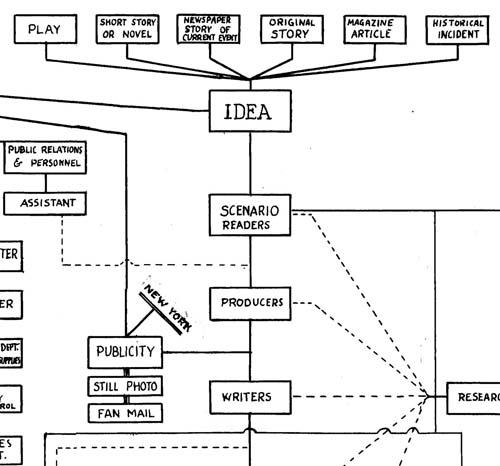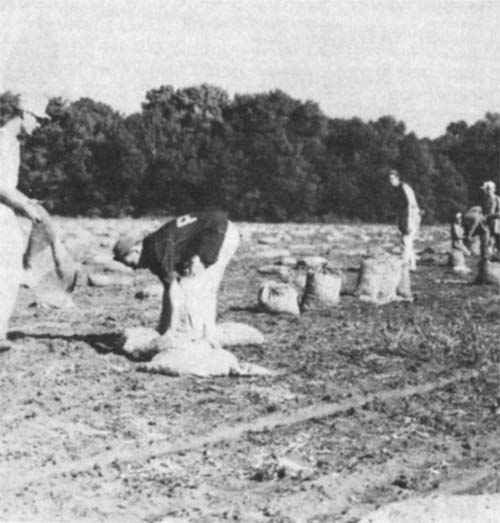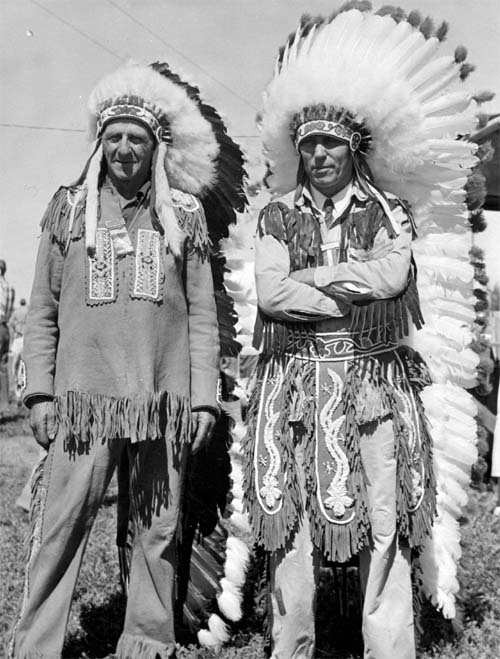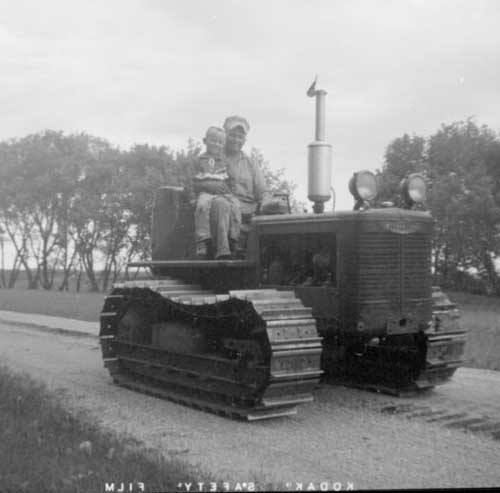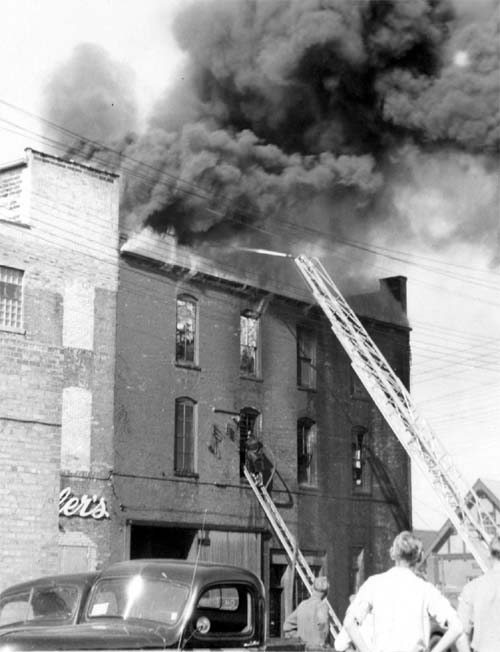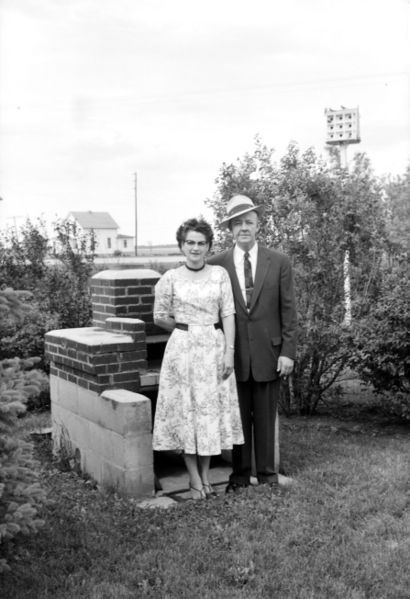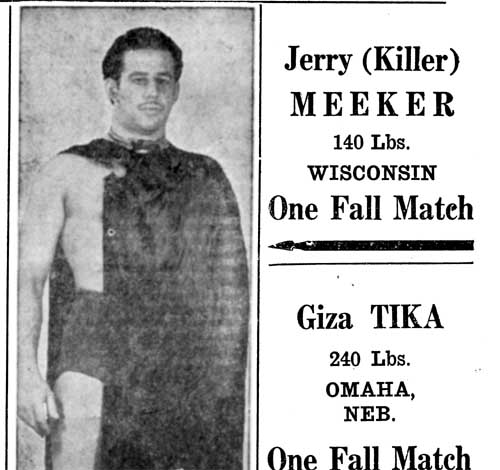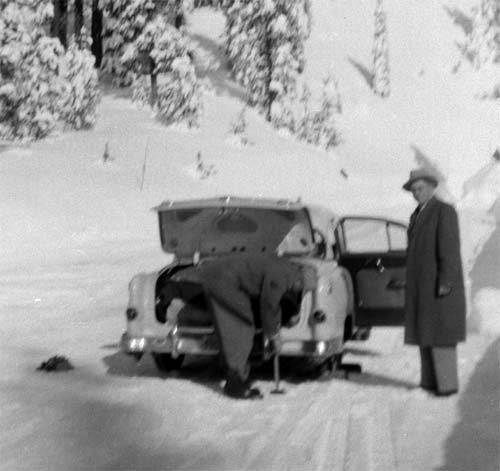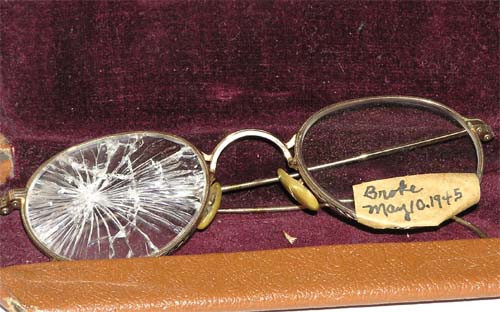
Click for full imageThese glasses were purchased at a flea market in July, 2008. The seller had no information about them, but the fact that they had been stored
in situ for sixty years — and the note to prove that fact even moreso — intrigued me enough to purchase them.
These are a child’s-sized pair of glasses with very little wear. I imagine that, due to their width, the child was under 5 years old. The right lens has a dramatic impact point just to the outside edge of center, which would indicate (to my uneducated eye) that the child had fallen forwards, and turned their head to the left to diffuse the impact, but not fast enough. The glasses hit the ground first, pushing in the right nosepad and exploding the glass into an orb-weaver’s handicraft of cracks. As the head kept moving, the nosepad pressed in as far as it could, the lens flexed down the center line in the now-weakened glass and created a crescent-moon crack from top to bottom.
The proud parents of this future baby-boomer weren’t about to erase this momentous occasion from history: the glasses were marked with the date of the event, placed in their glasses-case, and kept for posterity. May 10th, 1945, will go down in infamy as the day Junior fell down and broke his new pair of glasses.
